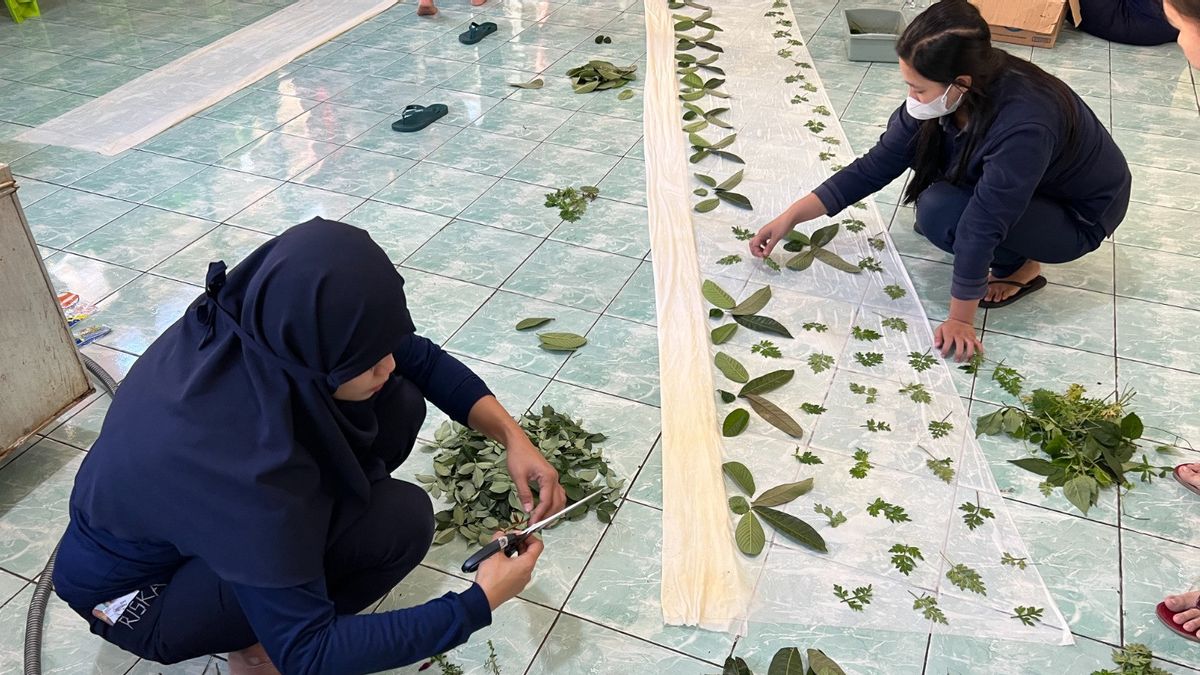SURABAYA - Prison inmates and detention centers in various regions in East Java have a real contribution in preserving and developing batik. How not, batik made by the inmates is global.
"We have started paying attention to batik independence coaching activities since 2011. Even batik from Sumenep Rutan was once one of the sponsors of Putri Indonesia Tourism 2022, Adinda Cresheilla, when she attended Miss Supranational 2022," said Head of the East Java Ministry of Law and Human Rights Regional Office, Heni Yuwono, Monday, October 2.
Heni said that the inmates had produced various motifs and developed batik techniques. According to Heni, there are several prisons or detention centers that make batik the superior product by the inmates, such as Bojonegoro Prison, Madiun Prison, Banyuwangi Prison, Malang Women's Prison, Sumenep Detention Center, Trenggalek Rutan, Surabaya Women's Detention Center to Kraksaan Rutan.
"The produced motifs also vary and continue to be developed with assistance from experts or professional batik," he said.
Heni gave an example of the Citra Batik Modern Sumenep Detention Center, Batik Eco Print Malang Women's Prison, Batik Shibori Trenggalek Detention Center. There is also Batik Jumput Rutan Perempuan Surabaya, Batik Gajah Oling Lapas Banyuwangi, Batik Ronggomukti/ Rukas Rutan Kraksaan and Batik Tulis Lapas I Madiun.
"Each prison cooperates with experts from the Job Training Center (BLK) or the private sector, according to what is in their respective regions," he said.
The patterns produced also adjust to their respective regions. Such as cow's carpage, bekisar chicken, masks, old brothers' birds, keris, palaces. In addition, it is also a mayura motif, wine mangoes to those that use natural dyes from tannins or leaf color substances.
"Batik produced by Malang Women's Prison is indeed more environmentally friendly because it does not produce synthetic chemical waste, because it uses Indonesian flora such as secang wood, padding leaves, distance leaves, pendu and teak leaves," he said.
For marketing, batik produced by prison and detention centers in East Java has reached the national level. Several national figures such as the Minister and Deputy Minister of Law and Human Rights to Putri Indonesia Tourism also did not hesitate to wear it.
Meanwhile, to develop the talents and interests of the inmates, the batik produced by the inmates was sold to the general public. Prisons and detention centers have been using social media and the galleries of inmates in each prison / detention center.
"In terms of price and quality, we believe we can compete, considering that many community leaders have proven it," he said.
The proceeds from the sale will later be allocated for non-tax state revenue (PNBP). In addition, the inmates also get premiums from the results of their hard work.
"Premies for inmates can be saved and can be taken later when the inmates will be released, so the hope is that business capital can be made when they are free from prisons / remand centers," he concluded.
The English, Chinese, Japanese, Arabic, and French versions are automatically generated by the AI. So there may still be inaccuracies in translating, please always see Indonesian as our main language. (system supported by DigitalSiber.id)













